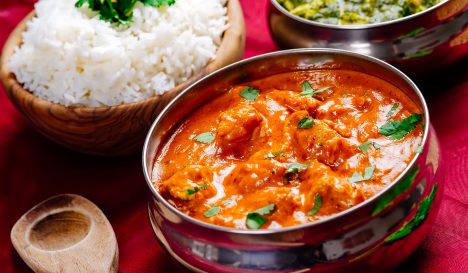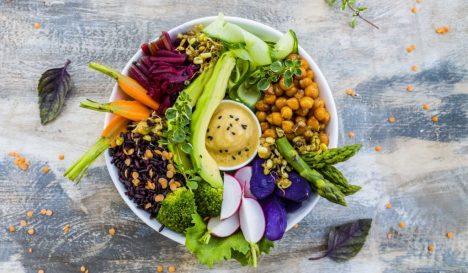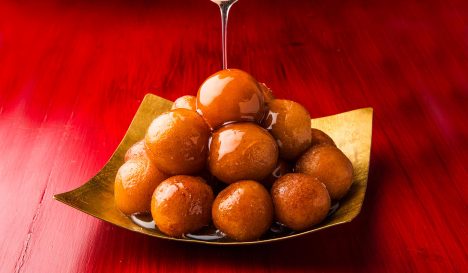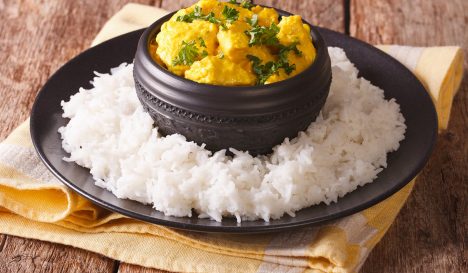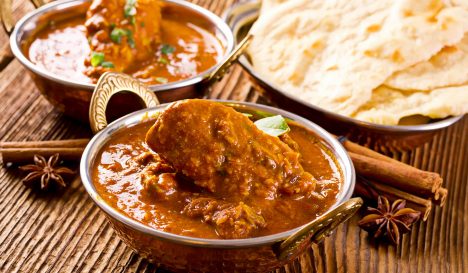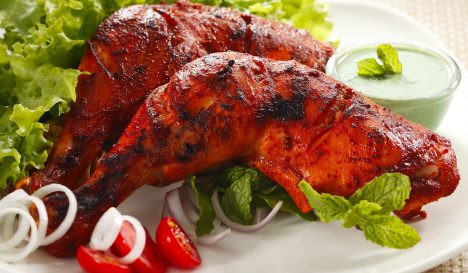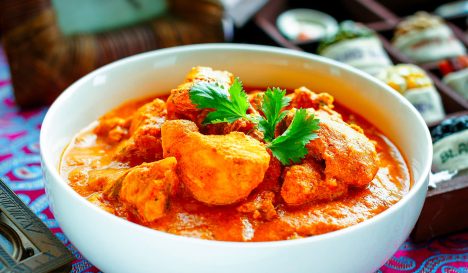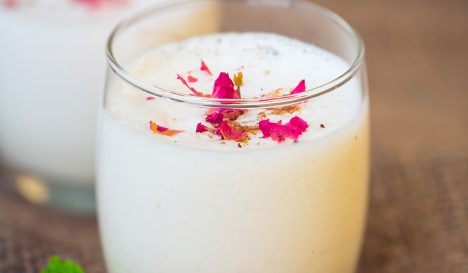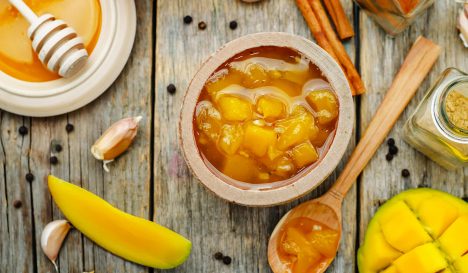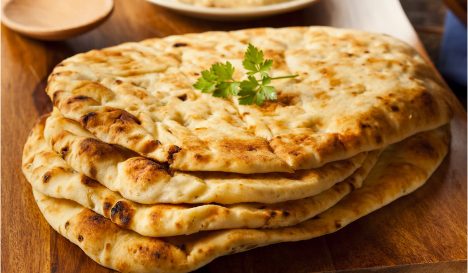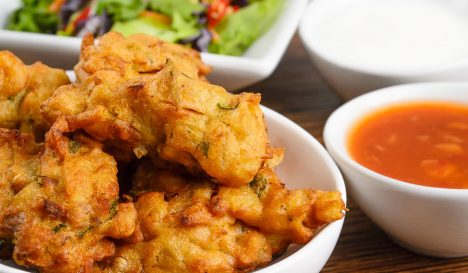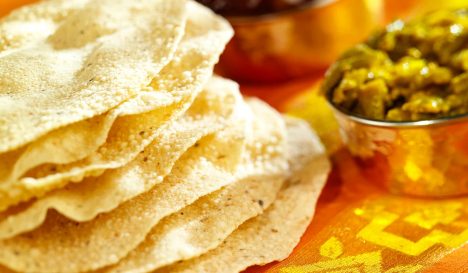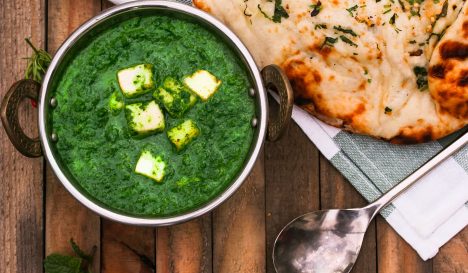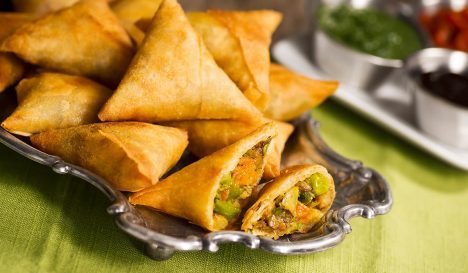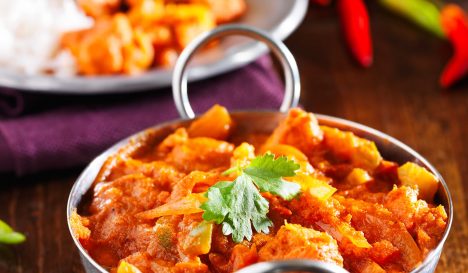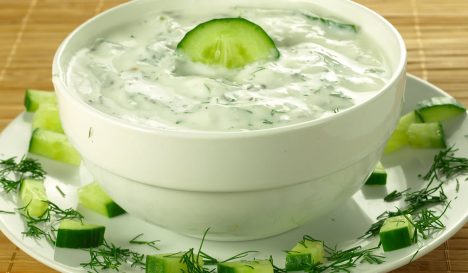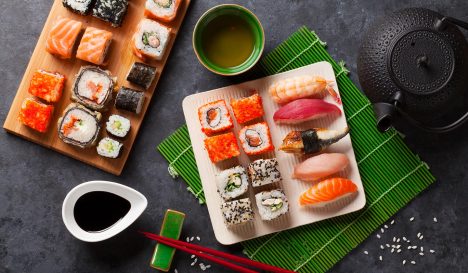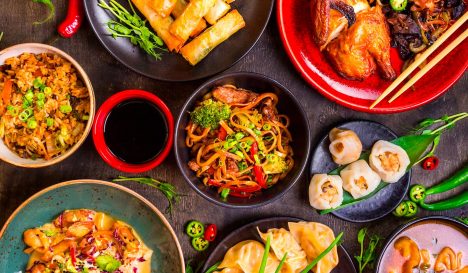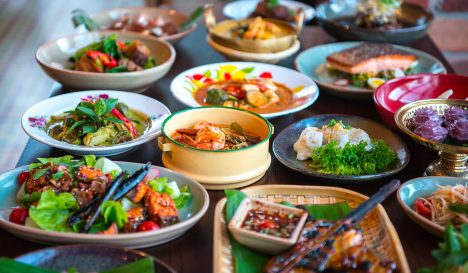Indian cuisine
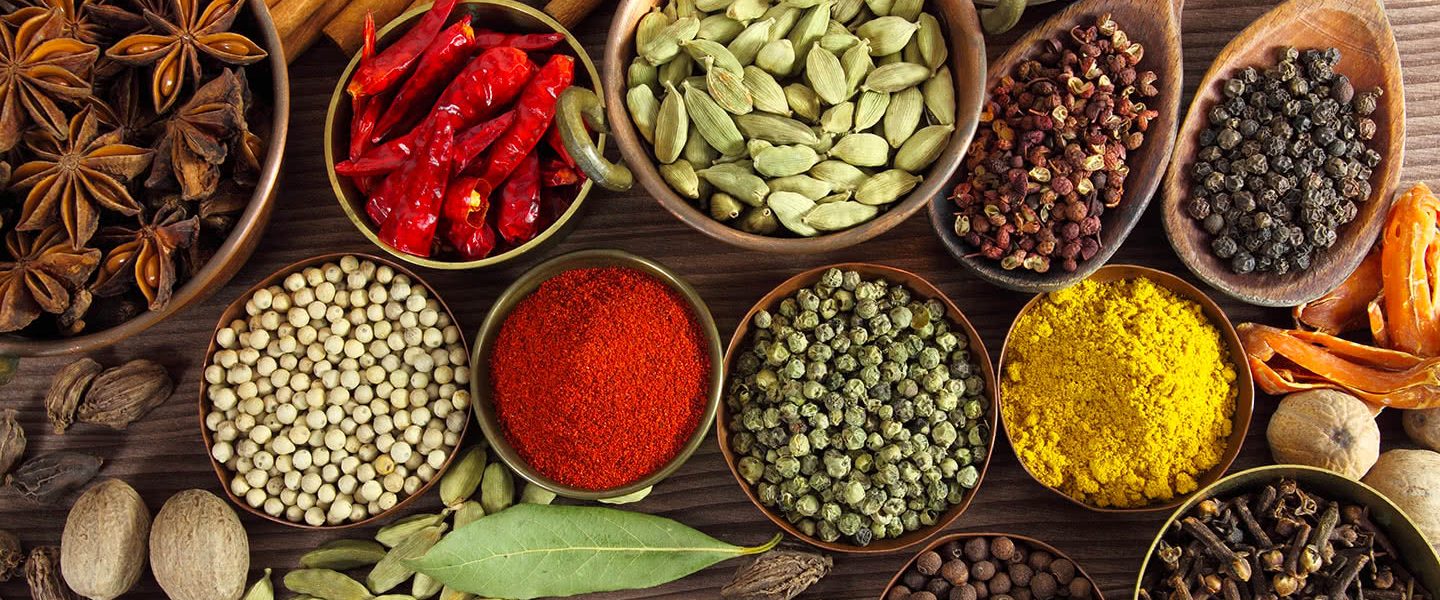
India is vast. More than half the size of Europe and number two in the world when it comes to the number of inhabitants (nearly 1.3 billion). However, wherever you are, colour appears on your plate. Vegetables and legumes play an important role in the diet – about 30 per cent of the population is vegetarian. People also like to use spices, preferably many different ones at the same time. This creates dishes that are complex in taste and smell. Add to this the many regional variations of dishes, and you will understand that Indian cuisine is incredibly diverse.
If you take a look at the kitchen of an Indian restaurant, you could think that people in India only eat curries. Yet this is not the case. From stews and stir-fries to pancakes and biryanis, India has much more to offer than just curries. Did you know that curries can also be dry or soupy
- North and south
- External influences
- Typical ingredients
- Best side dishes
- Good table manners
- Indian cuisine in Canada
- For beginners
- Skip's recommended Indian Restaurant
- Discover these Indian dishes
North and south
The north of the country is known for its tandoori dishes – chicken tandoori for example – and rich, creamy dishes, such as chicken korma. Thanks to the temperate climate, wheat grows well, with the result that people usually eat bread with meals: naan, roti, chapati or puri. The bread is perfect with the thick sauces from the northern regions, often based on yoghurt.
In the south, the climate is suitable for growing spicy chilli peppers, sour tamarind, coconut and rice. Here, people love hot food. The sauces are often somewhat more liquid and go well with rice: the rice absorbs the sauce without losing its firmness. The rice is not only steamed but is also made into thin pancakes (dosa) or steamed rice cakes (idli).
External influences
Indian cuisine is not only influenced by the climate, but also by religion. Many Indians are Hindu and often eat vegetarian or vegan foods. In addition, the Mogul rulers of previous centuries have brought Islamic practices, such as eating meat and fish. The arrival of Christians, including the Portuguese and later the British, has ensured that part of the population now also eats pork. Thanks to the same Christians, Calcutta even has a traditional Christmas cake with rum flavour, while the rest are largely restrained regarding alcohol.
Typical ingredients
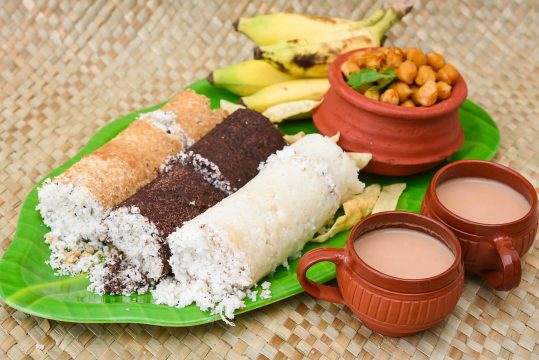
Spices form the backbone of Indian cuisine: both whole and finely ground powder. A list of twenty to thirty commonly used spices gives hundreds of possible combinations. In addition, Indian spices are also combined into masalas or spice mixtures, each with their own application. Chaat masala, tandoori masala and garam masala are examples of this. The main spices in Indian cuisine are cardamom, clove, cassia cinnamon, black pepper, cumin and coriander.
Basmati rice is the rice that grows in (the south of) India. The long-grain rice is loose in structure and does not stick after cooking.
Legumes, such as lentils, split peas and chickpeas, are an important source of protein for the vegetarian part of the population and are therefore found in many dishes. The best-known example is dahl (lentils).
Nowhere is the mango as versatile as in India. This sweet fruit comes from the Indian subcontinent and is used both raw and cooked in sweet, savoury and spicy dishes. Think mango lassi, mango chutney, dahl and raita.
Best side dishes
Not only is every Indian dish a combination of flavours, textures and colours, the meal as a whole should also have a certain balance. Side dishes are therefore essential on the Indian table. In fact, without these extras, the whole party will not take place and some will even refuse to take a bite of their main course. These culinary delights are therefore indispensable:
A salad – usually raw onion, cucumber and tomato with lemon juice and salt. Each bite of curry or dahl is alternated with a bite of salad. In this way, the creamy, sharp sauce and the bland rice are counterbalanced by the crispy vegetables and the sour lemon.
A pickle (achaar) – savoury pickled vegetables or fruit, such as mango, lime or daikon. You always take a tiny bit on your fork. This dish causes a sour and salty taste explosion with every bite.
A papadum – by taking bites from your crispy papadum, you add crunch and spice to your meal.
Raita – this cooling yoghurt blend often containing cucumber soothes an overheated mouth and gives an extra layer of flavour.
Good table manners
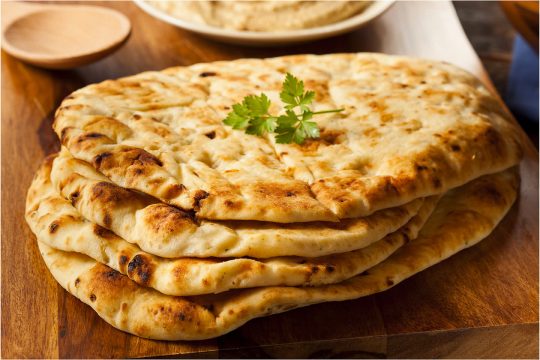
• In India, dishes are placed in the middle of the table and shared. It is rude to keep a dish all to yourself. Moreover, you will miss out because you will lack the multitude of flavours and textures that complete an Indian meal.
• Place a serving spoon in each dish so that nobody has to put their own spoon in a common dish. Doing so would “contaminate” the dish. The same applies to naan: never tear off one piece and then put the rest back. Cut the bread with a bread knife or pizza cutter, so that everyone can grab their own piece.
• Respect the food on your plate by scooping up no more than you can eat, and then eat it.
Indian cuisine in Canada
Canada’s multicultural diversity has attracted a growing community of people from India. No surprise then that the daring spices and vegetarian-friendliness of Indian cuisine has quickly found a place in the hearts and tummies of Canadians. Skip has many restaurants serving traditional flavours from the northern and southern regions of India. Discover the Indian restaurants closest to you here.
If you’re in Barrie and looking for an Indian brunch, Skip recommends ordering delivery from Taj – Grace Of India, which sources fresh ingredients from local farmers’ markets.
For beginners
If you are new to Indian cuisine, try the following dishes for a good overview of what the country has to offer:
Aappetiser
Lassi – Try this authentic Indian drink in all its forms and you will never crave a beer with your meal. Well, almost never.
Main course
Chicken Korma – A mild main dish that tastes rich, creamy and – thanks to subtle flavours, such as saffron and rose water – magical.
Accompaniment
Papadums – These wafer-thin, crispy crackers give crunch to your main course. Break into pieces and sprinkle over your curry, or take alternate bites.
Dessert
Gulab Jamun – These round, deep-fried doughnuts are drenched in sugary, rose-scented syrup. People in India love them!
Skip's recommended Indian Restaurant
If you’re ever in Montreal, Skip recommends checking out Tabla Village located at 1329 St Catherine St E, Montreal, Quebec. At Tabla, traditionally-spiced Indian dishes are cooked in a special Tandoori oven imported from India. While butter chicken is the community favourite, the extensive menu offers a range of delicious vegetarian and meat dishes.

